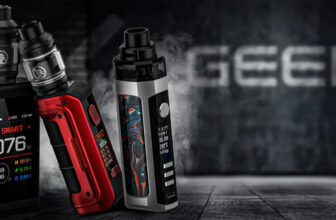
Although the vape atomizer is one of the parts of vaping that’s more familiar to people, it’s also the one part that is the most complex. To some, it may seem like a simple strand of wire that’s wrapped tightly around a rod and thrown into a shell (coil head), but there’s much more to it than what you think. In this article, we’re going to share an in-depth guide to the vape atomizer, targeting both entry-level beginners and even more experienced vapers to further expand their knowledge of vapor products.
What Is A Vape Atomizer?
An atomizer is described in the dictionary as “a device for emitting water, perfume, or other liquids as a fine spray.” A vape atomizer, however, is a device in the vapor category that vaporizes e-liquid and emits a fine spray or mist in a vapor form. Vape atomizer is also another term used to describe a clearomizer, tank, sub-ohm tank or rebuildable atomizer. Instead of using ‘vape atomizer’ as a general term, people will often describe a vape atomizer by referring to a specific product that falls under the vape atomizer category, such as a tank.
How Does A Vape Atomizer Work?
A vape atomizer works in a way that’s very simple, although fine-tuning one can become a bit more complex. To give you an easy way to understand how this works is to share the basic functionality, which includes a positive and negative terminal, a coil made of wire using a metal material to connect the two terminals, and a way to supply power. When you connect the leads from a coil from one terminal to the other, then activate a device to deliver power, the coil/wire makes a complete circuit. When this happens the coil will heat up and allow you to vaporize e-liquid.
There are other parts to making this all work where you could vaporize the e-liquid and actually ‘vape’. Just heating the wire won’t do you much good if e-liquid isn’t consistently coming in contact with the coil. To achieve this, you’ll need to insert a wicking material so that the coil is continuously saturated with e-liquid to vaporize. The most common form of wicking material for vape atomizers is organic cotton. By filling the inner portion of the coil with cotton and saturating it with e-liquid, the coil will continue to heat up and vaporize the e-liquid. When using something like a tank a coil is placed into a coil head and cotton is wrapped around the coil, rather than inside it. The coil head is inside the tank and e-liquid surrounds it, allowing the cotton wicking to constantly stay saturated.
How Is A Vape Atomizer Complex?
When you first started reading this article, we shared that even though the concept of a vape atomizer is simple, it’s more complex than what you may think, and it’s totally true. While the design may be simple and easy to understand, the coil that you must construct requires precision to meet the desired resistance. To reach an advanced level of performance and perfect the experience, people use intricate coils and even the best vape cotton is meticulously positioned. Vape atomizers have been researched by some of the industry’s brightest R&D teams and they’ve been able to perfect and recreate the same experience by manufacturing thousands of vape atomizers to be used in tanks, pods and more.
The Types of Vape Atomizers
There are many types of vape atomizers, although they are all used to carry out the same task. There are vape atomizers that you must rebuild yourself, vape atomizers that are integrated into pods, and vape atomizers utilized in tanks that you must replace after a period of time. Though all of them work in the same way and have the same job at hand, they’re all made to offer a different experience, better quality, and an enhanced performance. They’re able to achieve this by constructing the coils in a certain way. Some have dual coils, some coils are twisted, some run in parallel with one another, and the list goes on. When manufacturers create tanks, pods and other vape atomizers, they’re also constructing airflow systems and wicking systems to work in conjunction with the coils to deliver the desired experience.








